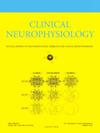商用查封检测软件的系统比较:更新等于升级?
IF 3.7
3区 医学
Q1 CLINICAL NEUROLOGY
引用次数: 0
摘要
目的比较两种更新的市售癫痫检测软件包(encevis 2.0和Persyst 14)在包含80例脑电图6826 h和912次癫痫发作的大型视频脑电图监测数据集中的应用。方法对两款自2021年以来进行了重大更新的癫痫检测软件包进行了随访研究,使用不同的灵敏度设置。结果平均总发作次数为11.4次,平均强直-阵挛发作率为0.7次。encevis 2.0和Persyst 14的检出率分别为80.7% ~ 89.1%和67.3% ~ 71.1%。每天的假阳性率(FPR) encevis 2.0为12 ~ 22,Persyst 14为2 ~ 4。结论encevis 2.0的DR明显高于Persyst 14,而Persyst 14的FPR明显低于encevis 2.0。更新后的FDA和CE认证的癫痫检测软件显示相反的变化:encevis的敏感性提高,FPR恶化,而Persyst的FPR改善,敏感性下降。与以前的出版物一致,自动癫痫检测软件已准备好常规临床使用,但具有良好的神经生理学知识和对所使用的特定软件包的优缺点的认识的专业人员至关重要。本文章由计算机程序翻译,如有差异,请以英文原文为准。
Systematic comparison of Commercial seizure detection Software: Update equals Upgrade?
Objective
To compare two updated commercially available seizure detection software packages (encevis 2.0 and Persyst 14) in a large video-EEG monitoring dataset comprising 80 patients with 6826 h of EEG and 912 seizures.
Methods
We conducted a follow up study of two seizure detection software packages with a significant update since 2021 using different sensitivity settings.
Results
Mean overall seizure count was 11.4 and mean tonic-clonic seizure rate was 0.7 per patient. Detection rates (DR) per patient were 80.7% to 89.1% for encevis 2.0 and 67.3% to 71.1% for Persyst 14. False positive rates (FPR) per day were 12 to 22 for encevis 2.0 and 2 to 4 for Persyst 14.
Conclusions
Encevis 2.0 showed a significantly higher DR than Persyst 14, whereas Persyst 14 showed a significantly lower FPR than encevis 2.0.
Significance
Updated FDA and CE certified seizure detection software showed opposite changes: encevis improved in sensitivity and deteriorated in FPR, while Persyst improved in FPR and deteriorated in sensitivity. In agreement with previous publications, automatic seizure detection software is ready for routine clinical use, but specialized personnel with sound neurophysiological knowledge and awareness of the strengths and weaknesses of the specific software package used is critical.
求助全文
通过发布文献求助,成功后即可免费获取论文全文。
去求助
来源期刊

Clinical Neurophysiology
医学-临床神经学
CiteScore
8.70
自引率
6.40%
发文量
932
审稿时长
59 days
期刊介绍:
As of January 1999, The journal Electroencephalography and Clinical Neurophysiology, and its two sections Electromyography and Motor Control and Evoked Potentials have amalgamated to become this journal - Clinical Neurophysiology.
Clinical Neurophysiology is the official journal of the International Federation of Clinical Neurophysiology, the Brazilian Society of Clinical Neurophysiology, the Czech Society of Clinical Neurophysiology, the Italian Clinical Neurophysiology Society and the International Society of Intraoperative Neurophysiology.The journal is dedicated to fostering research and disseminating information on all aspects of both normal and abnormal functioning of the nervous system. The key aim of the publication is to disseminate scholarly reports on the pathophysiology underlying diseases of the central and peripheral nervous system of human patients. Clinical trials that use neurophysiological measures to document change are encouraged, as are manuscripts reporting data on integrated neuroimaging of central nervous function including, but not limited to, functional MRI, MEG, EEG, PET and other neuroimaging modalities.
 求助内容:
求助内容: 应助结果提醒方式:
应助结果提醒方式:


